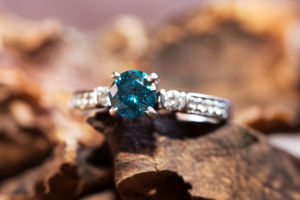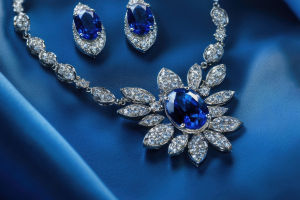Lykkers, aromatic plants have long been treasured for their fragrant properties. These plants, containing essential oils, are used for a variety of purposes ranging from culinary uses to medicinal and cosmetic applications.
The aromatic oils they produce are highly valued for their fragrance, which is often used in perfumes, soaps, and healing balms. This article explores different aromatic plants, their uses, and their contribution to the world of fragrance.
What Are Aromatic Plants?
Aromatic plants are those that contain volatile substances, commonly known as essential oils. These oils serve various purposes in nature, such as attracting pollinators or repelling harmful insects. Aromatic plants can be trees like bay laurel or eucalyptus, shrubs like juniper, or herbaceous plants such as chamomile and lemon balm.
These oils can be distributed throughout the plant or concentrated in specific parts, such as seeds (e.g., anise or coffee), bulbs and roots (e.g., garlic), leaves (e.g., tea), or even wood (e.g., sandalwood). The oils are volatile and do not dissolve in water, although they are soluble in oils or creams. Some of these oils are also known for their therapeutic properties, such as camphor, which can ease joint and muscle pain when used in topical ointments.
The Role of Aromatic Plants in Perfume Making
Perfume Production in Ancient Times
The use of aromatic plants in perfume making dates back to ancient civilizations. Early perfume-making techniques involved macerating fragrant herbs in oils or using raw resins such as myrrh and frankincense.
The ancient Egyptians, Assyrians, and Babylonians used perfumes mainly in cultural ceremonies. However, they did not use flowers in the production of fragrances.
The art of perfume making expanded significantly with the Romans, who helped spread the craft across Europe. In ancient times, the process of distillation was not yet known. It is believed that the technique was rediscovered by Arabs, who later introduced it to Europe. Perfumes from this period were based on animal fats and plant oils, which were combined to create fragrant balms known as “unguentum.”
The Renaissance and Modern Perfume Manufacturing
During the Renaissance, perfume-making evolved further, benefiting from the rediscovery of ancient Greek and Roman knowledge. The Crusades helped bring new materials and techniques from the East, including ethanol, which revolutionized the perfume industry.
Initially, perfumes were used for medicinal purposes, believed to protect against disease and purify the air. As the years went on, perfume became increasingly associated with luxury and personal adornment.
In the 16th and 17th centuries, Italy and Spain became leading producers of perfumes, particularly for use in cosmetics and as air fresheners. The city of Grasse in France rose to prominence as a center for perfume production, thanks to its favorable climate for growing fragrant flowers. By the 19th century, the perfume industry was thriving, and the discovery of synthetic ingredients allowed for the creation of modern fragrances.
Notable Plants for Perfume Production
Several plants are particularly prized for their contribution to the perfume industry, known for their fragrant oils that are extracted and used in high-quality perfumes.
Jasmine
Jasmine, originally from India, was brought to Europe by Spanish sailors around the 1500s. Its fragrant flowers are widely used in perfumery. The most expensive and sought-after variety of jasmine is the Jasminum grandiflorum, grown in Grasse, France. Its delicate fragrance is a key ingredient in many prestigious perfumes, including the famous Chanel No. 5.
Lavender
Lavender is well-known for its fresh and persistent scent, which has made it a staple in the fragrance industry. The plant’s name comes from the Latin word “lavare,” meaning “to wash,” as it was used historically for its cleansing properties. Lavender is cultivated in several regions of Italy, including Emilia and Tuscany, and is also found in parts of France and Spain. It is commonly used to scent linens and toiletries.
Rose
The rose, with its rich history dating back to Persia, is a key source of fragrance. It was cultivated in Europe as early as the time of the ancient Greeks and Romans, who associated it with the goddess of love.
Today, two main types of roses are used in perfume production: the Rosa damascena, grown in Bulgaria and Turkey, and the Rosa centifolia, found in southern France and Morocco. Producing rose essential oil is labor-intensive, requiring thousands of flowers to make even a small amount of oil.
Iris Florentina (Fiorentina Iris)
The Fiorentina iris, known for its intense and slightly tangy fragrance, has been cultivated for perfume production since the 15th century. Its rhizomes, or roots, are harvested, dried, and ground to extract their fragrant oils.
This process is lengthy and complex, contributing to the high cost of the oil. The cultivation of iris for commercial purposes expanded in Tuscany during the 19th century and remains a part of the region's heritage, with a special festival dedicated to the flower in San Polo.
Conclusion
Aromatic plants have played a crucial role in human culture and industry for centuries. Their fragrant oils are used not only for perfumes but also for therapeutic purposes. From the ancient Egyptians to modern-day perfumers, the techniques and materials for creating fragrances have evolved significantly.
However, the essence of these plants—whether it be jasmine, lavender, rose, or iris—remains central to the art of perfumery. These plants continue to inspire and delight, with their rich history and enduring fragrance enriching both our personal and cultural experiences.


